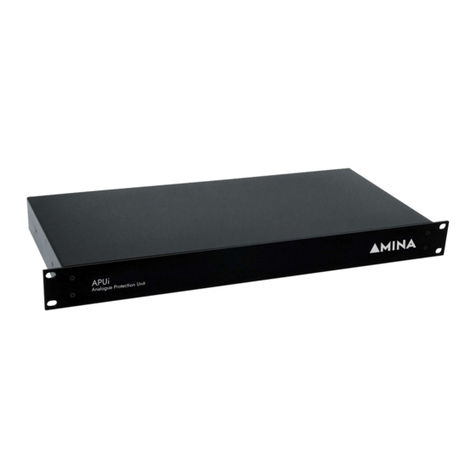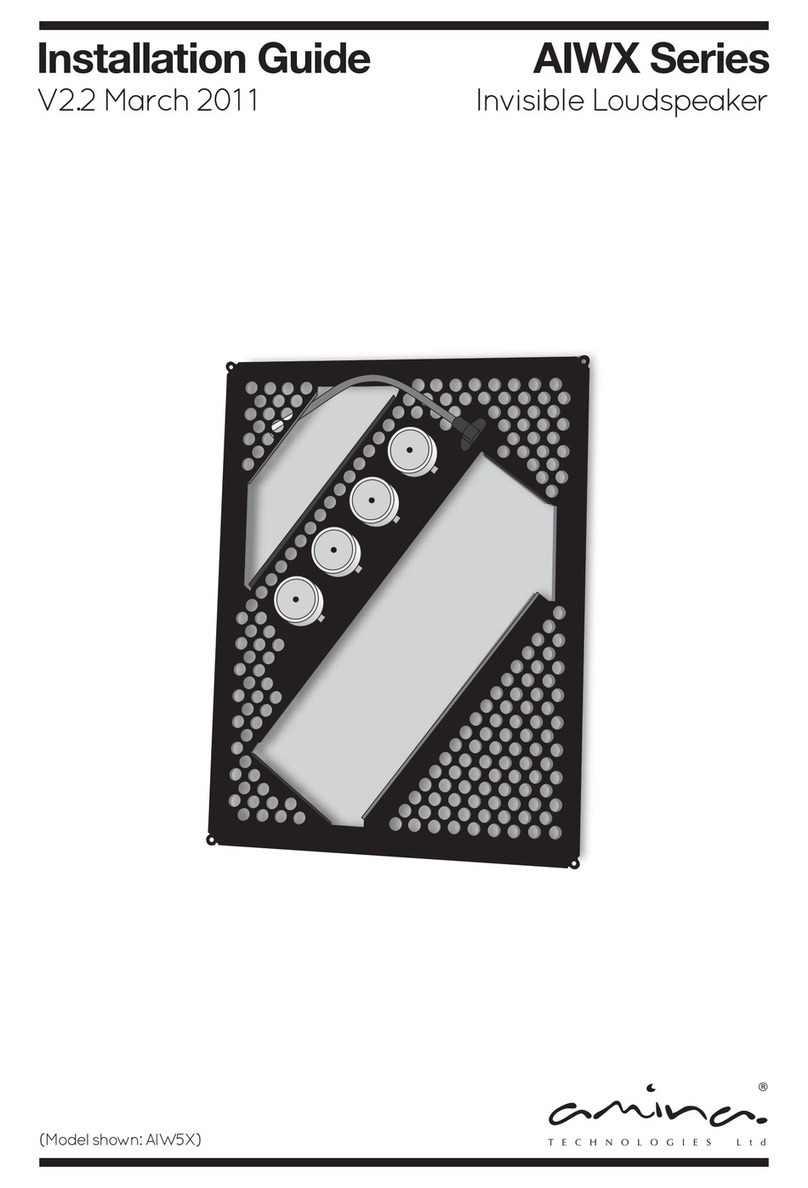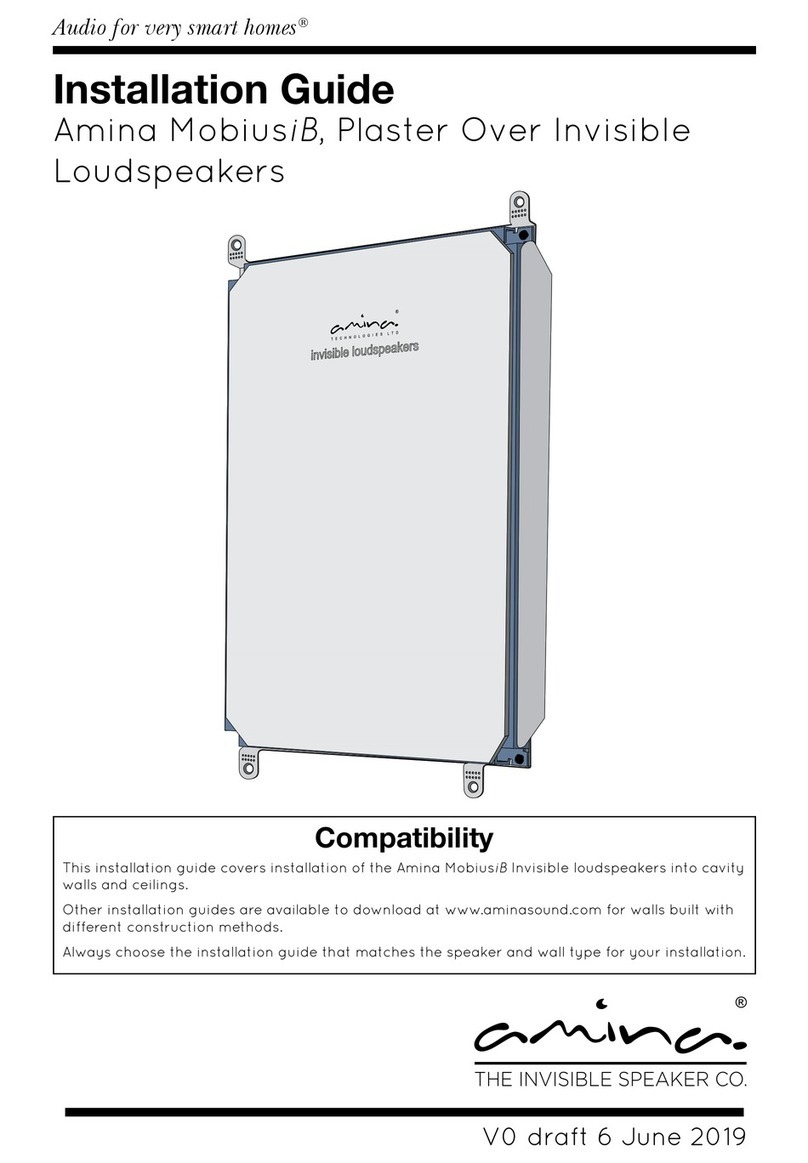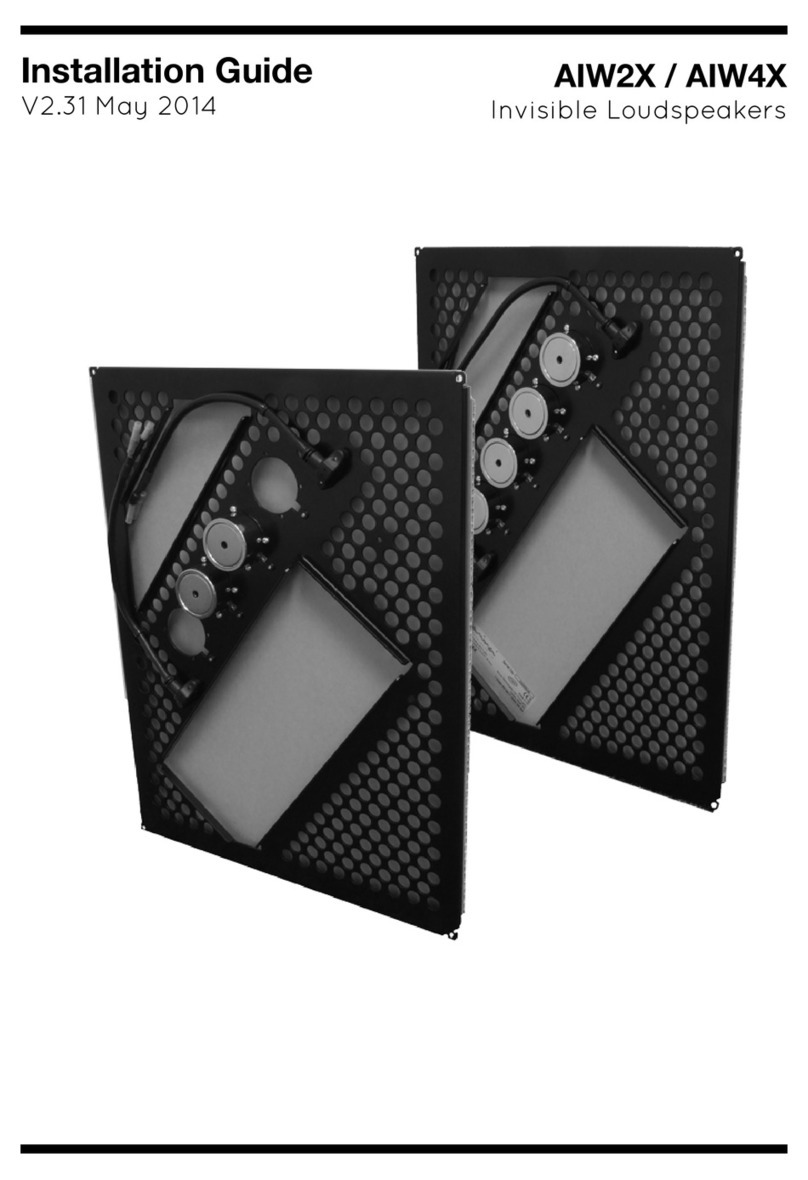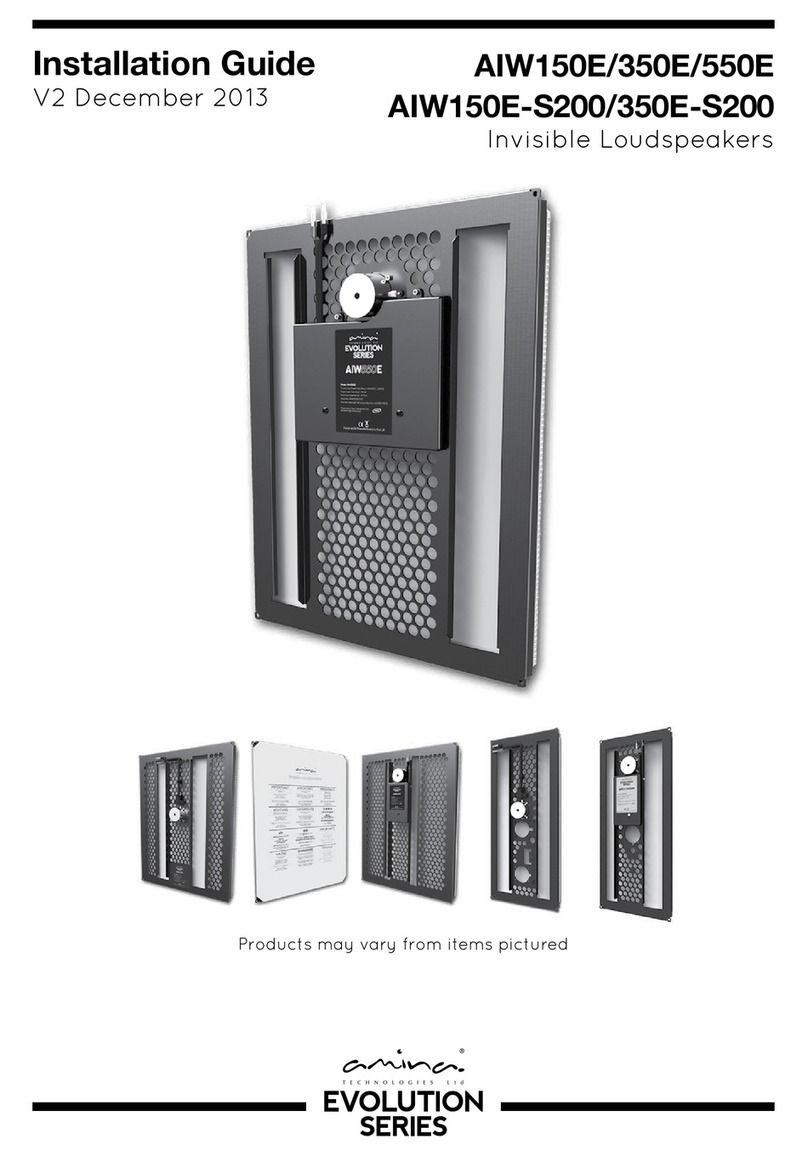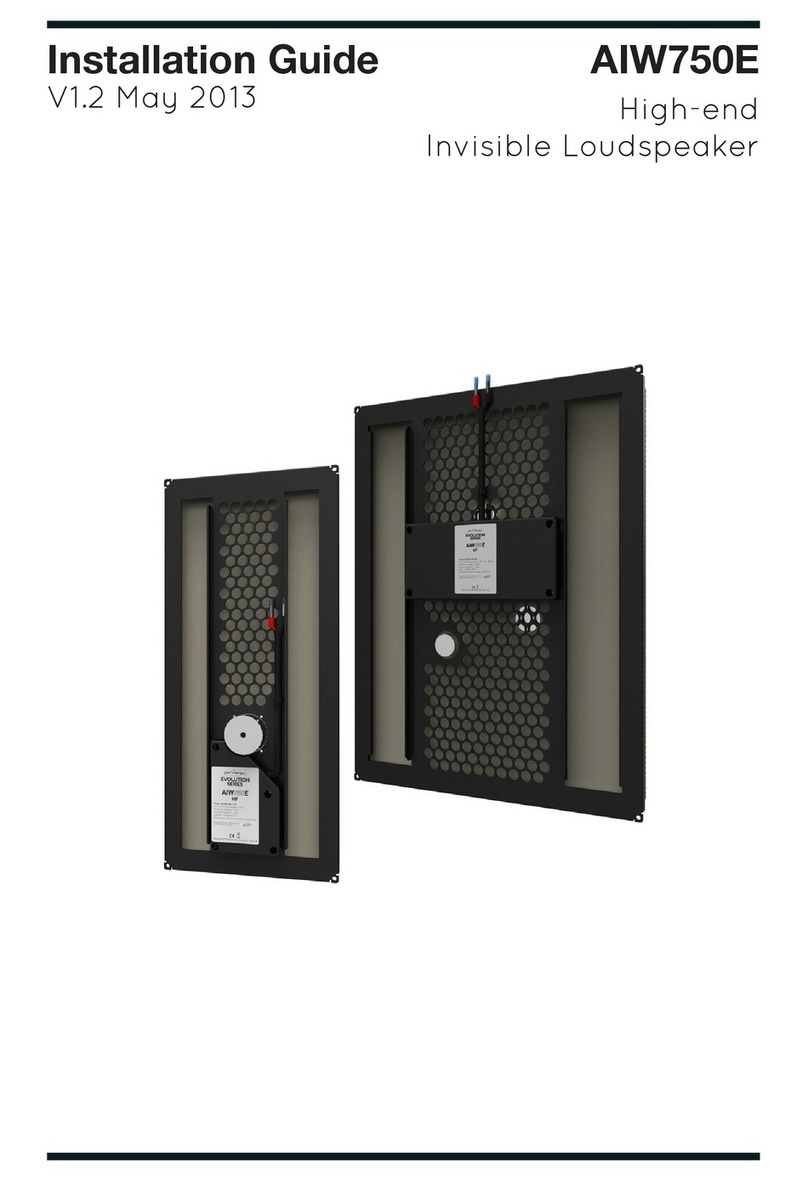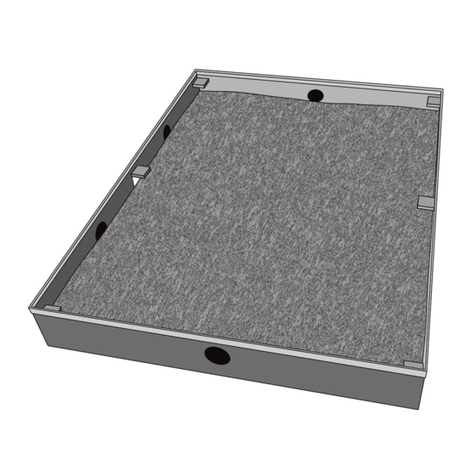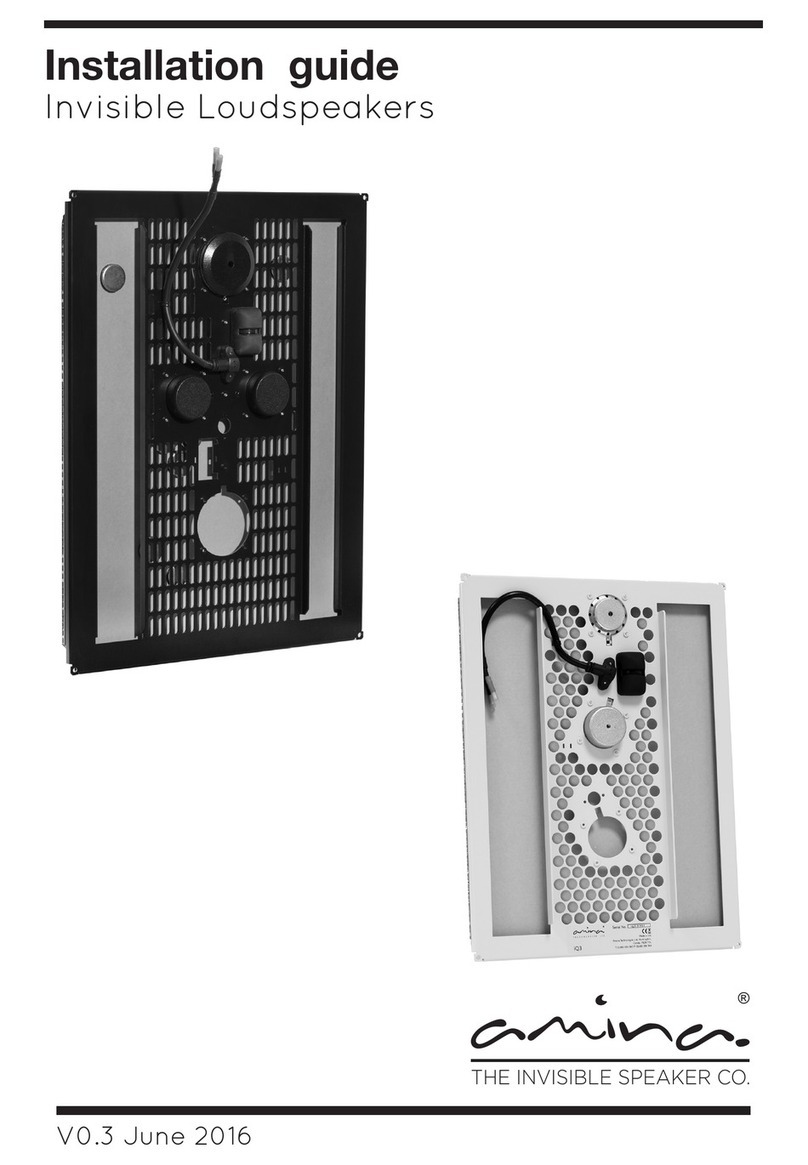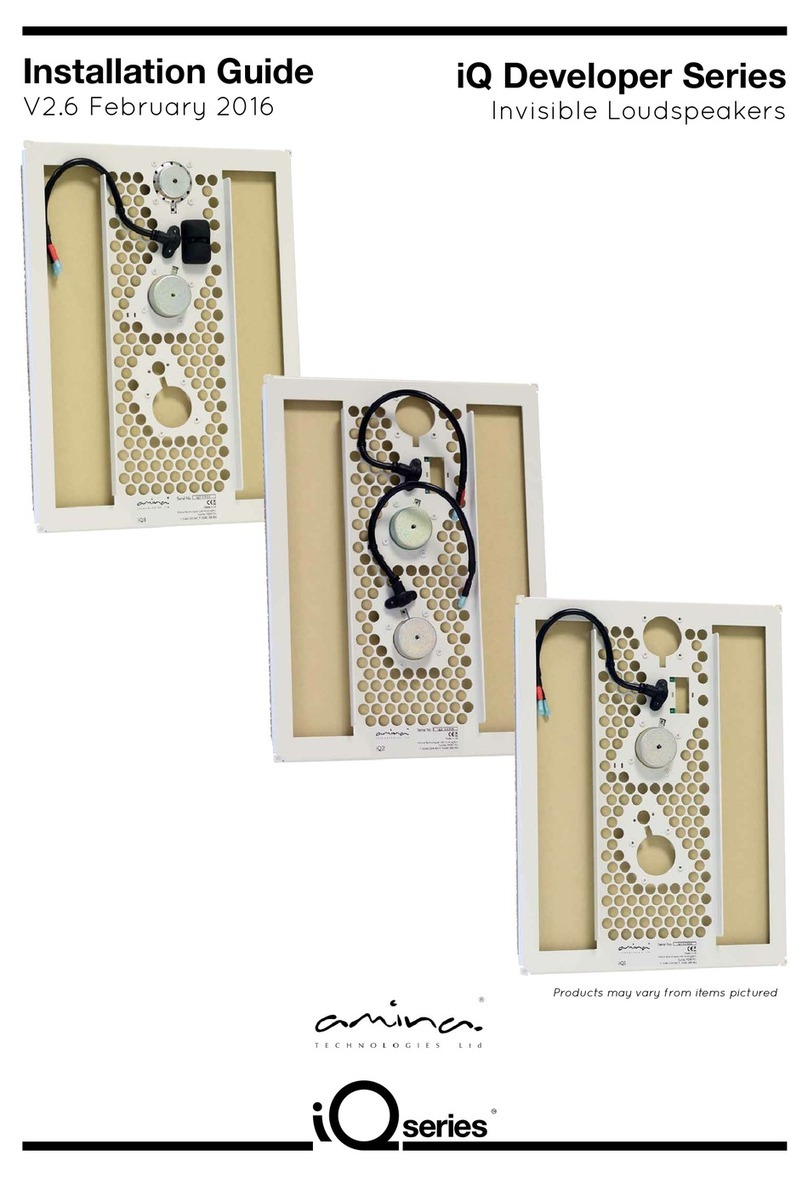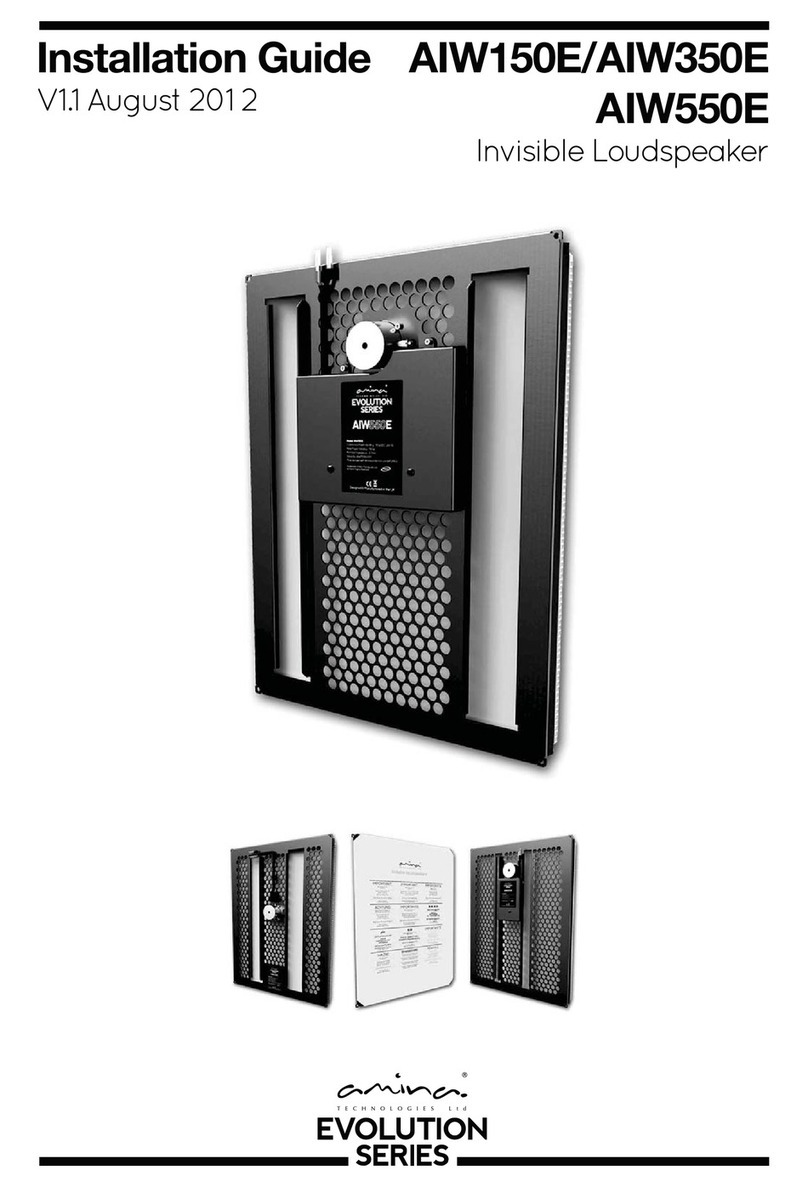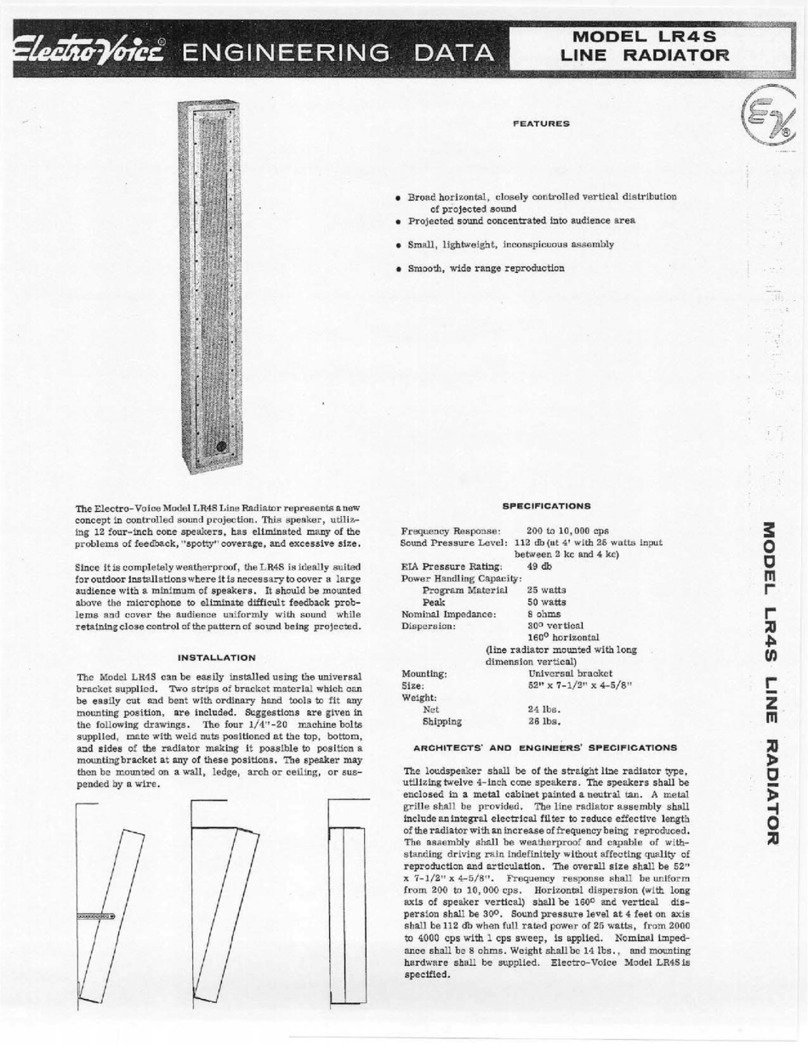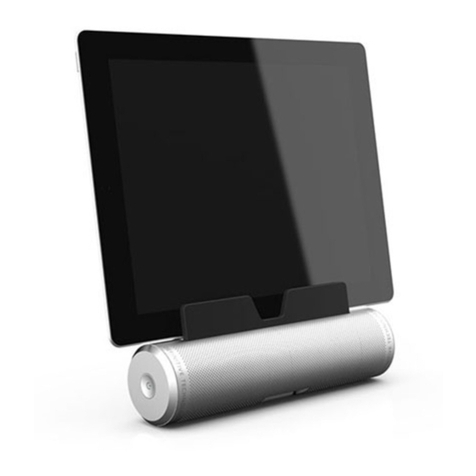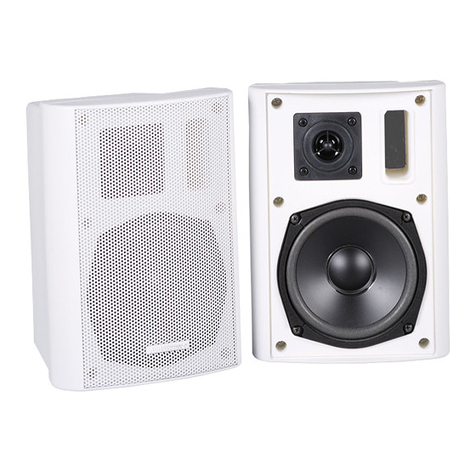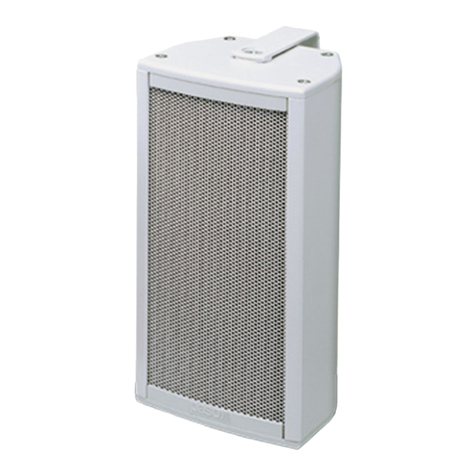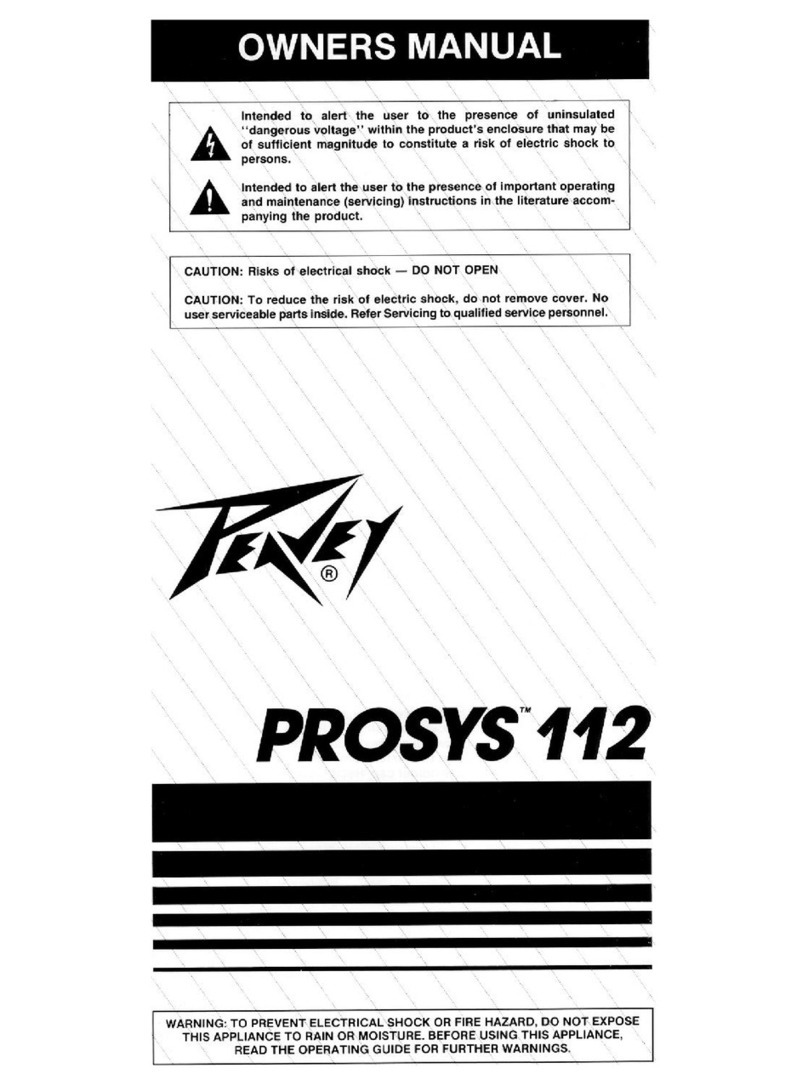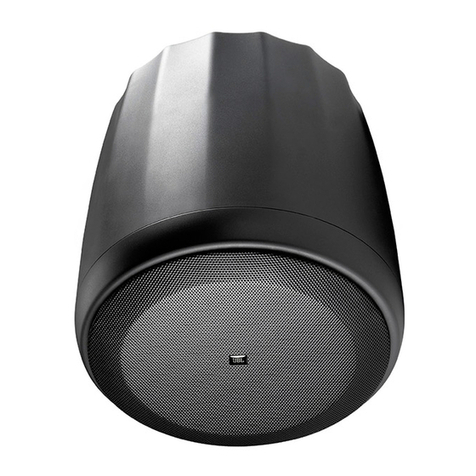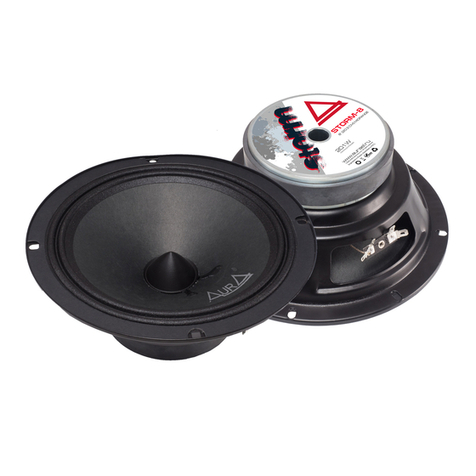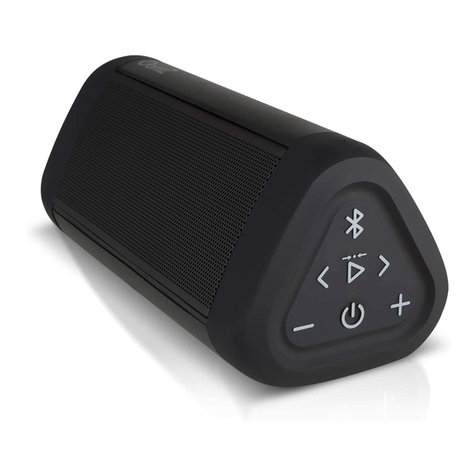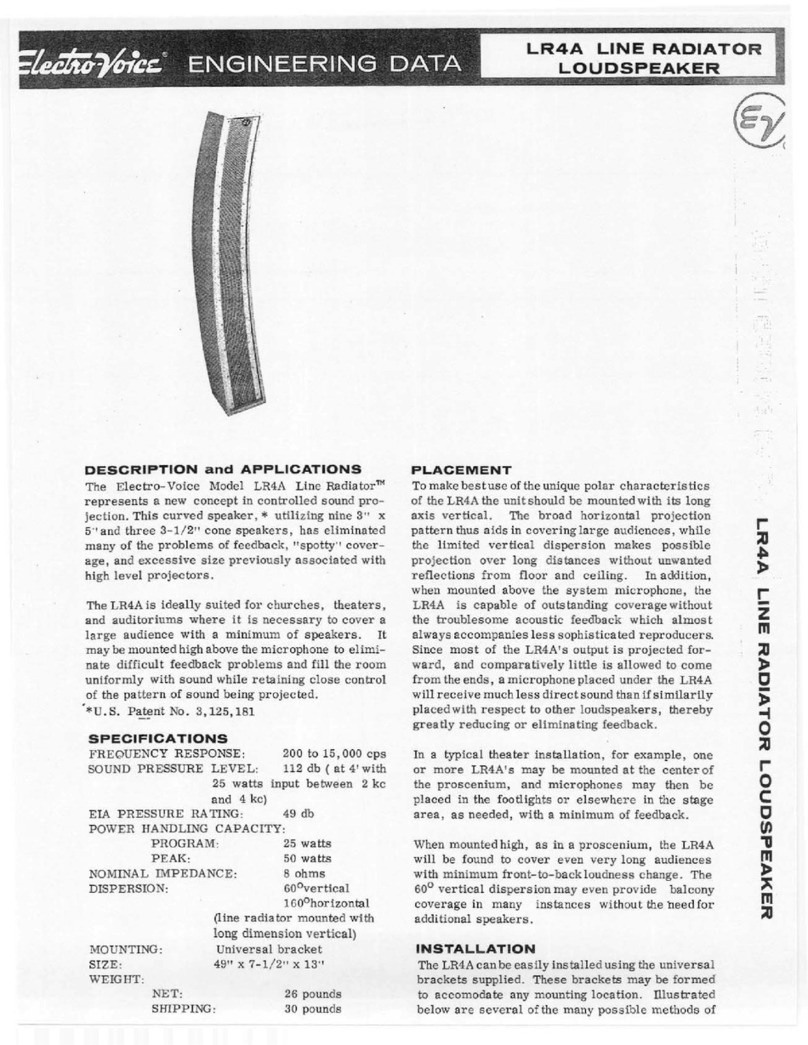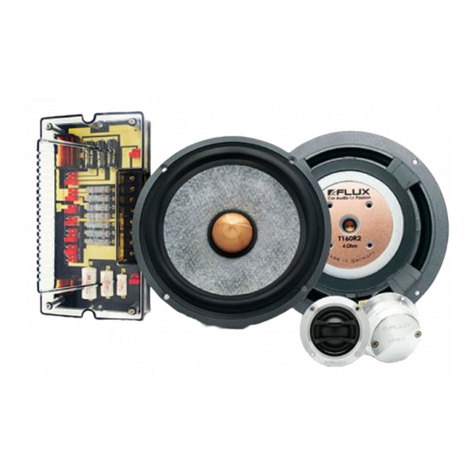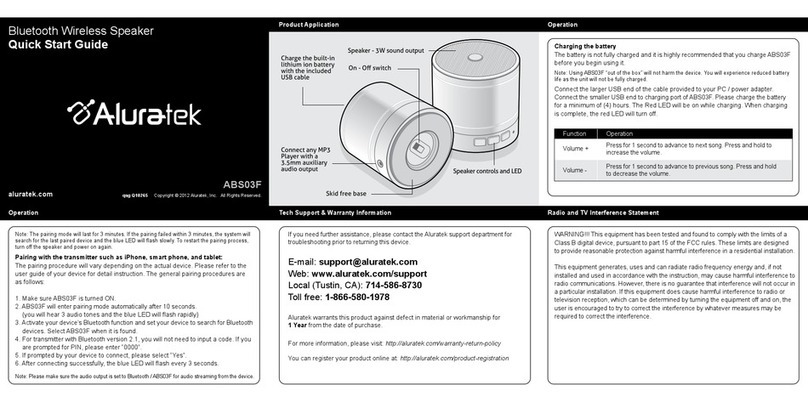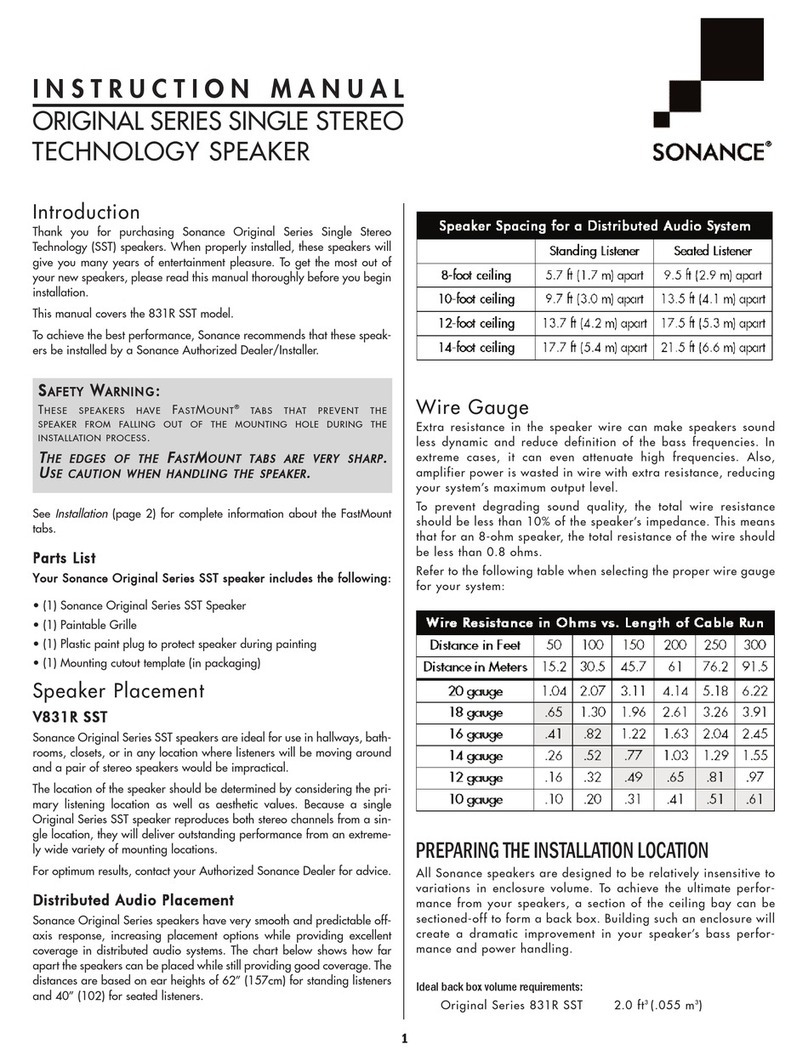09
08
Product Positioning and Quantity Requirements:
Commercial Installation
The overriding factor in terms of best product positioning for multiple source installations is,
where possible, to evenly space the number of panels across the given space. This will create a
very even S.P.L. across the whole environment. The direction, orientation and height are much
less relevant.
®
As a general rule of thumb, in ceiling applications, one Amina Plaster In-Wall loudspeaker will
be required every 7 to 10 metres (i.e. covering an area of 49 to 100 square metres). S.P.L. levels
measured at the mid point between two panels and 0.6m down (i.e. standing height in a room
with a 2.4m high ceiling) will be 6dB lower than when measured directly under the panel. When
measured at a distance of 1.1m down (i.e. sitting height) this figure changes to just 3.5dB.
Therefore the higher your ceiling the more even S.P.L. coverage will be obtained below it.
As a rule of thumb, in wall mount applications, panels positioned every 8m will provide less than
3.5dB SPL reduction measured at the mid-point between panels and at least 1.1m away from the
wall, compared with a measurement taken directly in front of the panel and 1.1m away. The
measured S.P.L. in the centre of the space compared to the perimeter will depend on the width
of the room and the amount of reflective surfaces in the space.
®
If you have special requirements please contact your supplier or Amina for assistance.
Sound transmission in buildings and isolation techniques:
®
The actual sound energy generated from the rear of the Amina Plaster In-wall or In-Ceiling
loudspeaker is equal to that generated from its front surface. Superficially this might be thought
of as being trapped within the wall or ceiling and, to some extent, this is true. In practice though,
some of this energy is transmitted through the rear of the wall and emerges at its opposite face
or, in the case of the ceiling, emerges at the floor above. Some will also travel along any internal
cavity to emerge in connecting rooms. The wall or ceiling construction will determine how much
of this energy is transmitted, and users/installers need to consider carefully the impact this may
have on neighbours and other building users before installation commences.
If the wall or ceiling consists of a plasterboard and studwork facing a solid concrete floor or block
wall structure, sound transmission to the other side of the wall is minimal due to the heavy mass
of the concrete / block structure in the centre.
If the construction, in the case of a wall, is simply plasterboard on both sides of wooden or metal
stud work or, in the case of a ceiling, plasterboard faced joists with wood based floor boarding on
the upper surface, then sound transmission is going to be quite considerable, due to the low mass
and lack of absorptive material in between.
In these circumstances it is worth implementing additional sound isolation techniques within the
®
wall or ceiling prior to installation of the Amina Plaster In-Wall or In-Ceiling panel loudspeaker.
At its most basic, this may be as simple as adding sound adsorbing mineral wool or wadding into
the cavity directly behind the panel speaker. Different grades of such materials exist - ask your
builders merchant for advice. The quality and increased depth of this material will provide
improved isolation.
A more sophisticated approach is to create extra mass by forming a box work containment
section in plasterboard or other such material behind the speaker, and again fill the space
between it and panel with mineral wool. The mineral wool can touch the rear of the panel but
should only be resting against it. It should not be packed in tightly enough that it exerts force on
Wooden frame work/
Plaster board front onto
Solid block wall with
sound insulation
Block wall
Wooden frame
work attached
to solid wall
LiFi unit
Plaster board
Insullation
Typical ‘stud’ wall
with Sound Insullation
Sound
Insullation
Plaster board
12mm
LiFi unit
Wood frame
work
Multipurpose Exhibition,
Conference, Worship Hall
x 8 units in total
Restaurant
X: Speaker positions
Shaded areas: Sound will be
quieter but have excellent
quality
X
X
10m
6m
60m
20m
X
X
X
X
X
X
X
X
Cut-away view of ceiling
Incorporating Sound Insulation
• LiFi plastered into ceiling
• Box erected around speaker unit
- free wire through top
• Insulation around and inside box
• Secure to main beams
X: Speaker positions. LFi-T units
